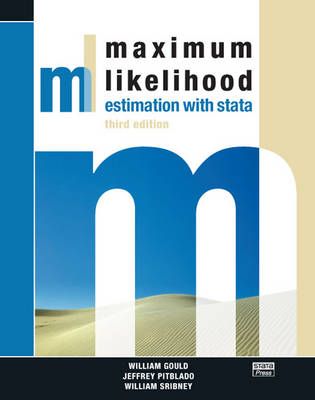Written by the creators of Stata's likelihood maximization features, Maximum Likelihood Estimation with Stata, Third Edition continues the pioneering work of the previous editions. Emphasizing practical implications for applied work, the first chapter provides an overview of maximum likelihood estimation theory and numerical optimization methods. With step-by-step instructions, the next several chapters detail the use of Stata to maximize user-written likelihood functions. Various examples include logit, probit, linear, Weibull, and random-effects linear regression as well as the Cox proportional hazards model. The final chapters describe how to add a new estimation command to Stata. Assuming a familiarity with Stata, this reference is ideal for researchers who need to maximize their own likelihood functions.
New ml commands and their functions:
constraint: fits a model with linear constraints on the coefficient by defining your constraints; accepts a constraint matrix
ml model: picks up survey characteristics; accepts the subpop option for analyzing survey data
optimization algorithms: Berndt-Hall-Hall-Hausman (BHHH), Davidon-Fletcher-Powell (DFP), Broyden-Fletcher-Goldfarb-Shanno (BFGS)
ml: switches between optimization algorithms; computes variance estimates using the outer product of gradients (OPG)
- ISBN10 1597180122
- ISBN13 9781597180122
- Publish Date 15 November 2005
- Publish Status Out of Stock
- Out of Print 2 November 2010
- Publish Country US
- Imprint Stata Press
- Edition 3rd New edition
- Format Paperback
- Pages 290
- Language English
